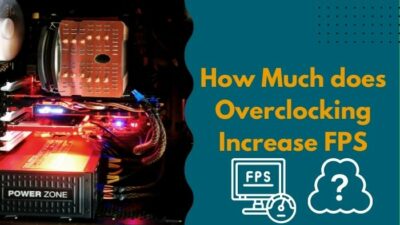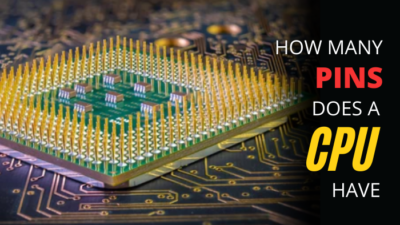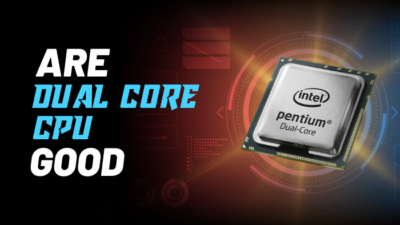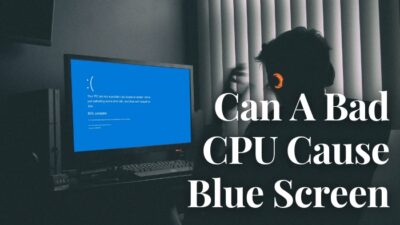It’s not everyone’s jam to jump into the CPU delidding process. It takes experience and courage to execute it correctly. Advanced users, however, perform this complex process to achieve the finest thermal output.
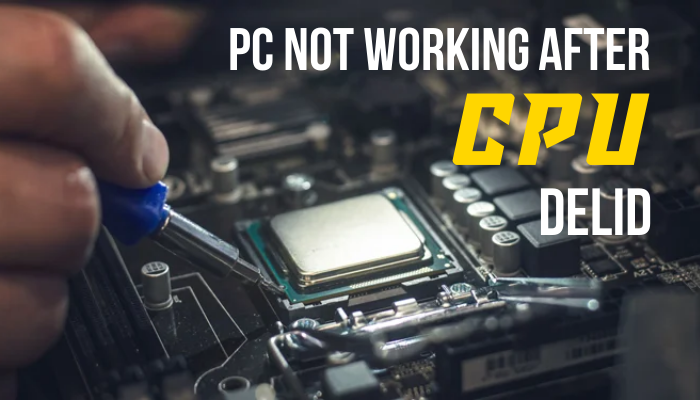
But things can go south pretty quickly, despite how carefully you carry out the procedure. So, if your PC is not booting or crashes with WHEA UNCORRECTABLE ERROR, SYSTEM THREAD EXCEPTION NOT HANDLED error messages, read this article to sort it out.
Why PC Not Working After CPU Delid?
Your PC is not working after delidding the CPU because of deep scratches on the die, PCB shards coming off or scraped, grazing on the contact pin of the CPU, liquid metal going over the die and shorting the circuitry, or damaging the motherboard pins.
See, when you manually delid the processor, there exist huge risk factors. Especially when using a razer blade to take off the lid, A.K.A the IHS. To cut through the strong adhesive, you may scrape off a small part of the PCB or may mark a deep groove. Eventually,
it will damage the CPU.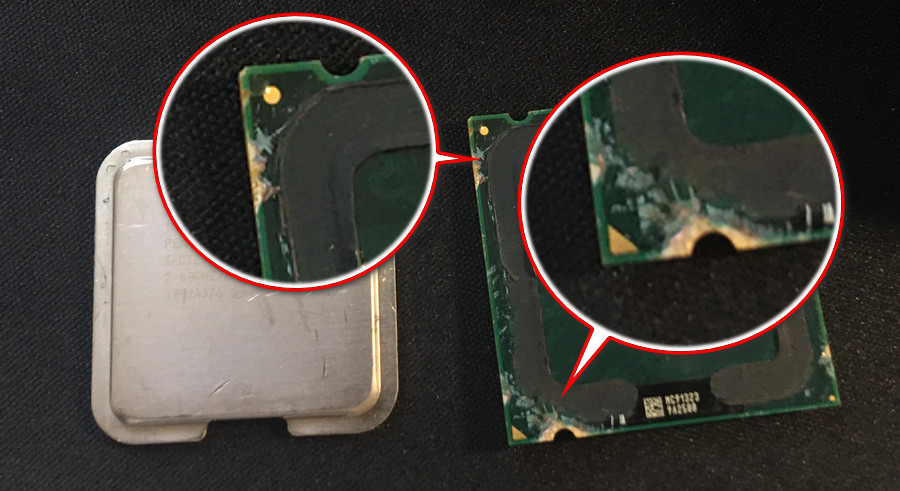 Even if you manage to remove the lid perfectly fine, a small inattentive move can make the die get physically damaged. You may not notice it in the first place, but once you put everything in its place, you get yourself a broken chip.
Even if you manage to remove the lid perfectly fine, a small inattentive move can make the die get physically damaged. You may not notice it in the first place, but once you put everything in its place, you get yourself a broken chip.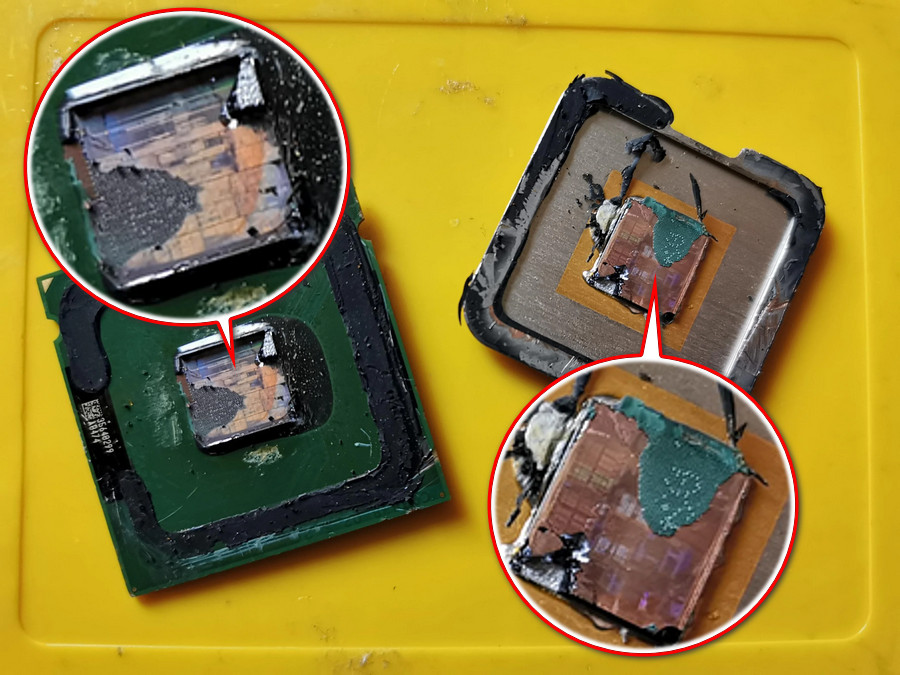 Now, coming to the reason why delidding is done — outstanding thermal performance. For sure, you will replace the stock thermal compound between the die and the IHS. And liquid metal is the best TIM that you can apply.
Now, coming to the reason why delidding is done — outstanding thermal performance. For sure, you will replace the stock thermal compound between the die and the IHS. And liquid metal is the best TIM that you can apply.
When applying LM to the die, being super careful is a must. If you put too much of it, LM will sip out the die surface and interfere with the circuits on the PCB. And that will cause the PC not to turn on or respond.
Besides, if any liquid metal residue is left on the PCB it may yield the same unfortunate result.
With that being said, you can never rule out the possibility of physically damaging the motherboard socket pins or the contact surface of the CPU along with the Surface Mount Device (SMD).
You know if you damage any of these at any moment during the delid process, chances are you have a dead CPU at your hand. I personally broke my i7 7700K.
How to Fix PC Not Working or Booting After CPU Delid
So, once you put back everything after delidding and putting in new TIM, your PC is not showing good symptoms. To be precise, it’s not working. So what to do?
Here’s the truth — if the processor is compromised physically or to a degree that is beyond repairable, most methods you can or may try has a slim chance to restore it.
Yet, if the CPU is not completely dead, you can take several measures to rejuvenate your computer.
Here are the actions you can take to fix a non-functioning PC after the CPU delid:
Reseat and Clean the CPU Contact Point
After reassembling everything, if there are crashes and no response on your rig, first take out the CPU carefully. Check for dents or scratches on the contact surface.
Straighten Bent CPU and Motherboard Pins
Bent pins on the processor and the motherboard socket lead to a bricked system. So, observe closely if you messed up the pin position on the CPU and the board in the delid process.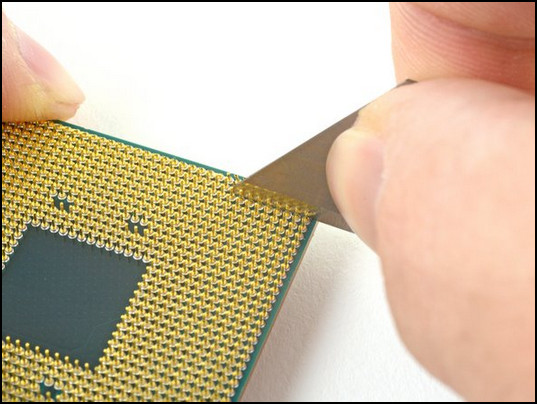 If you see any pins out of place and not aligned with the rest of the pins, you need to bring them back to their original state.
If you see any pins out of place and not aligned with the rest of the pins, you need to bring them back to their original state.
But how to fix CPU bent pins? They are cramped in a tight space!
Well, take a sharp, rigid object such as a needle or paper clip. Gently push the pins back to their places with it.
Clear CMOS and Update BIOS
Sometimes, clearing the CMOS fixes CPU issues. Simply, take out the motherboard’s battery for 5–10 minutes and then put it back in. Try to turn on your PC and check if it works.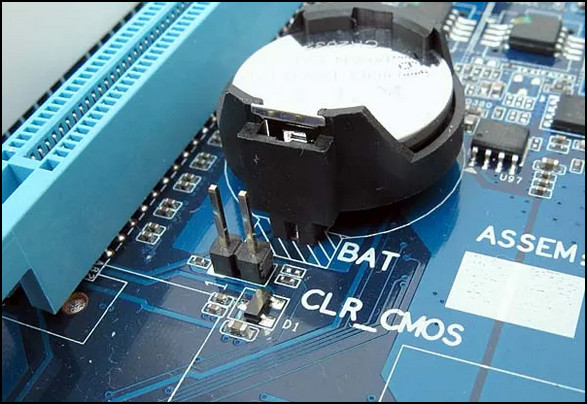 Still not working? You need to walk a bit extra then.
Still not working? You need to walk a bit extra then.
On that note, if your motherboard comes with dual BIOS, try switching to the backup BIOS.
Delid Again & Remove Scattered Liquid Metal
So, if all the above method fails to revive your rig, there’s one more hardcore action you can take. That is, re-delid your processor. Only to verify whether any accidental liquid metal is present on the PCB.
If this is the case, clean it off properly and make sure there’s no sign of LM anywhere outside the die.
Re-attach all the components and see whether your PC is functional again.
FAQs
What Does Delidding A CPU do?
Delidding is an advanced technique that allows you to remove the IHS of the CPU from the processor silicone. So that a user can replace the stock thermal compound between the die and IHS; which drastically, improves the CPU thermals.
Does Delidding Void Warranty?
Yes, delidding voids the warranty. Any physical modification of the processor within the warranty period discards the manufacturer’s warranty.
Ending Remarks
CPU delidding has gotten really easy in the last few years with all the dedicated tools available on the market. But you still may end up with a bricked PC after all. Hope this article helps you in such dire moments.Comment down below, if you have still doubts.

